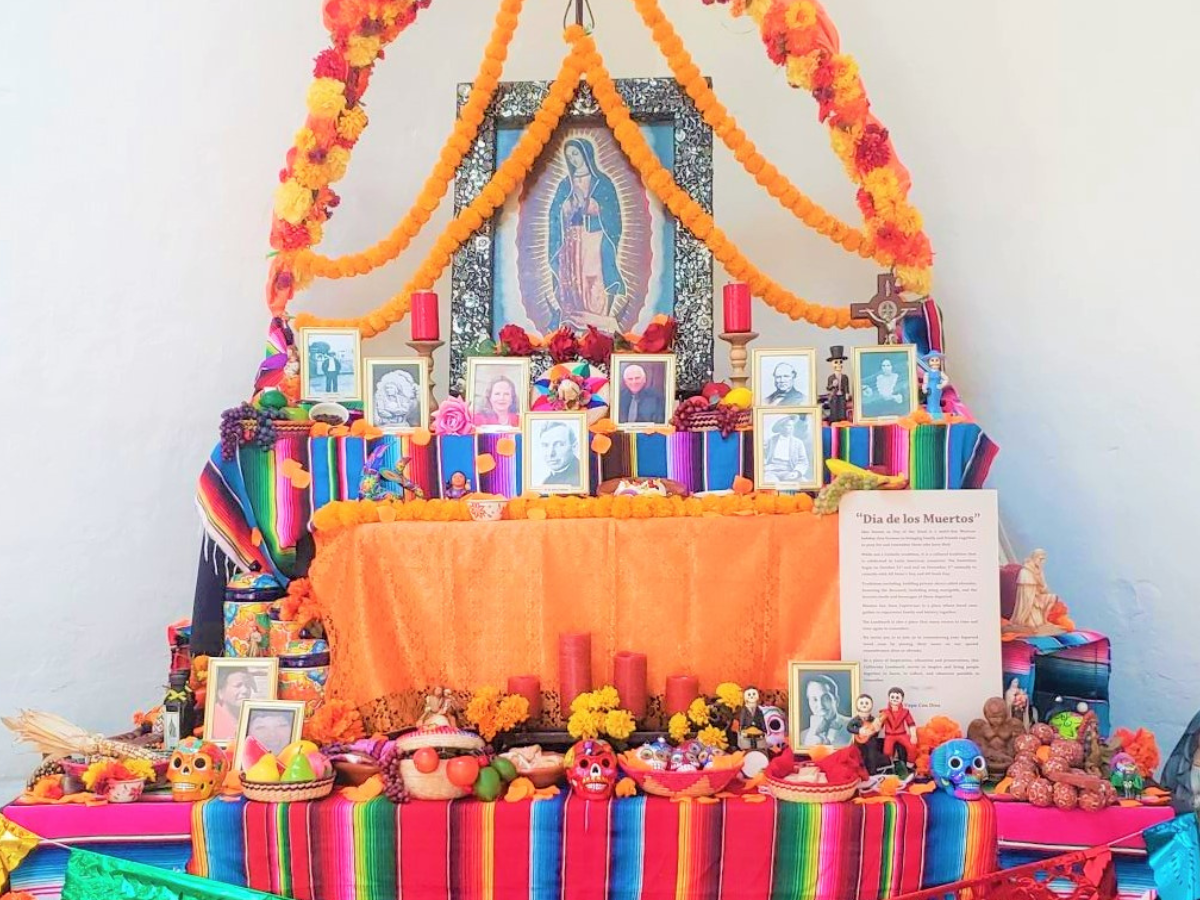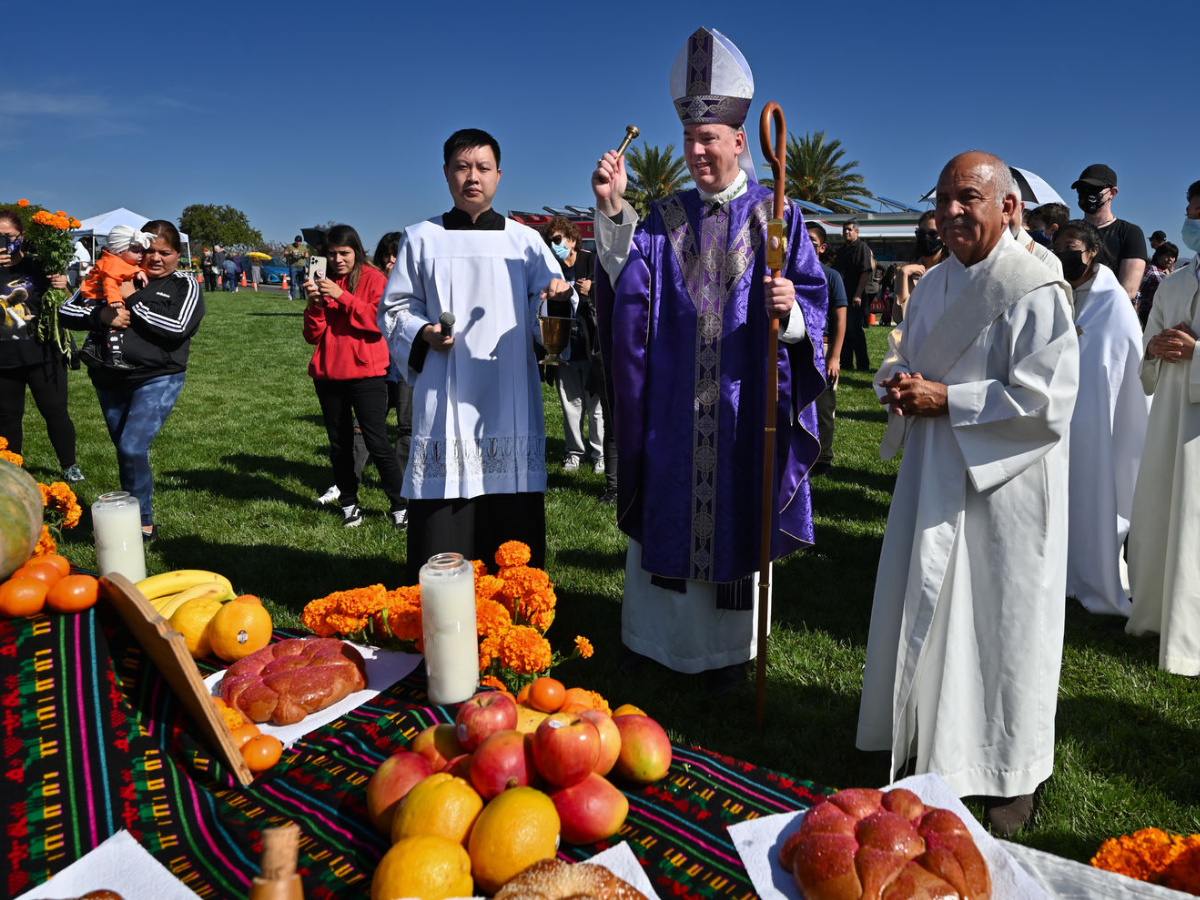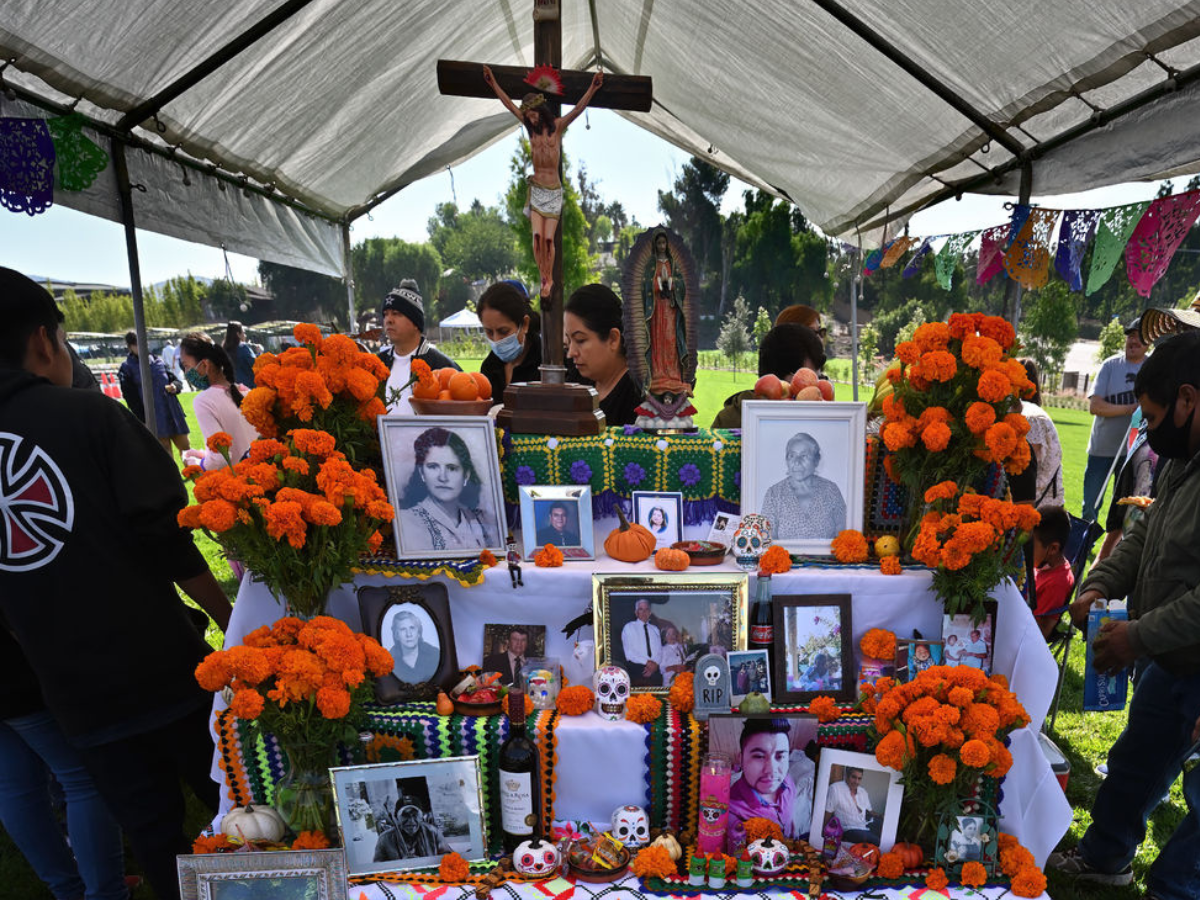Annually on Nov. 1, the Catholic Church throughout the world celebrates the Feast of All Saints, followed by the Feast of All Souls on Nov. 2. In certain regions in Mexico and in areas to which the tradition has spread, these days also mark Día de los Muertos, or “Day of the Dead,” in which families honor the memories of their loved ones who have passed away.
The 2017 Pixar film “Coco” offered audiences of glimpse of the festivities associated with Día de los Muertos, from lively cemetery gatherings to the colorful altars, to people dressed as skeletons, as well as the emphasis on remembering family members who have passed. However, the film did not incorporate the rich theology associated with the holiday.
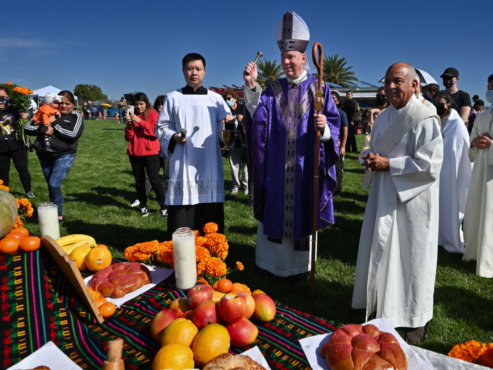
BISHOP TIMOTHY FREYER BLESSES THE ALTARS AT HOLY SEPULCHER CEMETERY IN ORANGE ON NOV. 1, 2021, IN HONOR OF DÍA DE LOS MUERTOS. PHOTO BY STEVEN GEORGES/DIOCESE OF ORANGE
Father Juan Navarro, who serves as a parochial vicar at Christ Cathedral, first learned about Día de los Muertos after coming to the United States from his native Colombia.
“When I came here as a priest, I didn’t know about all these traditions,” he explained. “So, I needed to learn the tradition to accompany the community.”
CHRISTIANIZING A TRADITION
As a student at the Pontifical University of Salamanca in Spain, Fr. Navarro created a presentation on Día de los Muertos. Through his research, Fr. Navarro learned of Franciscan, Dominican and Jesuit monks who had come from Spain to Mexico after its discovery to spread the Gospel. Some of these monks were ethnographers, who studied the local culture and traditions, recorded their findings and sent reports back to Spain.
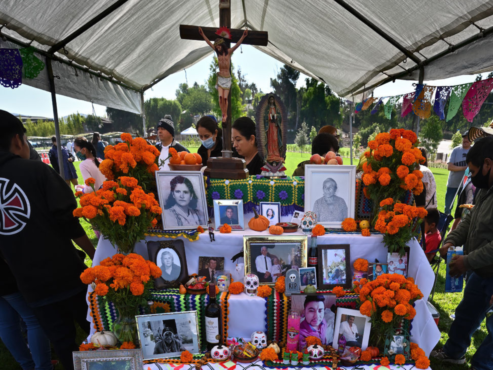
ALTARS FOR LOVED ONES ARE ON DISPLAY AT HOLY SEPULCHER CEMETERY IN ORANGE ON NOV. 1, 2021. PHOTO BY STEVEN GEORGES/DIOCESE OF ORANGE
Día de los Muertos may bear a passing resemblance to the Oct. 31 celebration of Halloween, or All Hallows Eve, with the costumes, food and festivities. However, the origins of these two traditions are quite remote. While the practice of wearing Halloween costumes is thought to have evolved from the Celtic pagan festival of Samhain, Fr. Navarro learned that Día de los Muertos is rooted in two separate Aztec feats honoring the dead, one focused on children and one on adults.
Upon learning about these native customs, rather than simply trying to do away with them, the local missionaries incorporated them into the feasts of All Saints’ Day and All Souls’ Day, the former celebrating all those who have died and are now in heaven with God, and the latter primarily focused on praying for all the faithfully departed, including the souls in purgatory.
“The Catholic Church took their tradition and transformed it into what it is today. We believe in the creed. We believe in life eternal; we believe in the resurrection of the body. So, we pray for all the souls and celebrate that Jesus Christ is victorious,” Fr. Navarro explained. “But we also tell the stories of the people. This is the time when parents and grandparents will start to tell their children about their own parents’ grandparents. It is a time for community sharing.”
What has become the traditional Día de los Muertos altar serves as an example of how the ritual was Christianized, Fr. Navarro noted. While the native people had their own altars to honor the dead, the Christian community developed an altar of three tiers, representing the Father, Son and Holy Spirit. The altar is then adorned with images of Jesus Christ and various saints, as well as candlelit pictures of departed loved ones. Bright colors, incense, marigolds and decorated skulls cover the altar, which is then then surrounded by food, drinks and other items that the departed are known to have particularly enjoyed, so that they will know the items are intended specifically to honor their memories.
A BIBLICAL BASIS
Fr. Navarro sees a correlation between the celebration of Día de los Muertos and the pre-Columbian underground tombs of Tierradentro in Colombia, which are elaborately painted to honor the deceased, and as with the Día de los Muertos altars, food items were placed on their behalf. He noted that while neither custom may have originated in Christianity, the tradition of honoring and praying for the departed has a biblical basis. In 2 Maccabees 12:38-46, for example, God’s people pray and make atonement for the sins of the dead.
“The reason why cemeteries are beautiful places is because, in the language of the scripture, the people there are asleep in Christ,” he said. “They are not laid down in a passive way; they are laid down in an active way, waiting for the resurrection.”
Local customs vary, but Día de los Muertos celebrations typically begin on Oct. 31 or Nov. 1, continuing through Nov. 2. Parishes within the Diocese of Orange typically build their own Día de los Muertos altars for their own celebrations at local Catholic cemeteries.
“What I like about this culture is that there is a lot of festivity around this day, said Fr. Navarro. “It’s very family oriented; it’s about connection. It’s a feast. Also, because it comes from Mexico, it’s very colorful. They have songs and poems that speak about the victory of Christ and how death has no power.”

